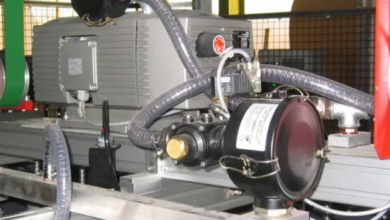Heat Stress OSHA Compliance: Essential Steps to Protect Workers in Hot Environments

Heat stress osha compliance is crucial for employers looking to safeguard their workers in hot and challenging environments. Hot weather and hard work raise heat illness risks, so following safety rules is essential. This guide will walk you through the essential steps to ensure your workplace meets OSHA standards while keeping your team safe and productive.
Overview of OSHA Heat Stress Guidelines
OSHA provides guidance to help employers protect workers from heat-related illnesses, even though there is not yet a single federal heat-specific standard. Key points include:
- Understanding Heat Stress
Heat stress occurs when hot temperatures and physical work put strain on the body. The risk can be higher or lower depending on what a worker wears, their health and fitness, and how accustomed they are to working in the heat.
- Heat-Related Illnesses
Includes heat stroke (life-threatening), heat exhaustion, heat cramps, heat fainting, and heat rash. Prompt recognition and response are critical.
- Risk Assessment
Use tools like Wet-Bulb Globe Temperature (WBGT) to assess heat risks. Adjust for protective clothing and worker acclimatization.
- Prevention Strategies
- Give workers plenty of water and remind them to drink often.
- Schedule regular rest breaks in shaded or cool areas.
- Reduce workload, slow down the pace, or do heavy work during cooler times.
- Use fans, ventilation, air conditioning, or heat shields to lower the temperature.
- Train workers and supervisors to recognize symptoms, prevent heat stress, and provide first aid.
- Keep a close eye on workers who are at higher risk.
Importance
- Heat illnesses can escalate quickly and be deadly.
- Heat reduces productivity and worker performance.
- Most heat-related incidents are preventable with proper water, shade, scheduling, training, and monitoring.
Employer Responsibilities
Under OSHA’s proposed heat stress rule, employers must actively protect workers from heat-related illnesses by:
- Identifying Heat Dangers: Monitor workplace conditions and pinpoint areas or tasks with high heat exposure.
- Developing a Site-Specific Prevention Plan: Create a tailored plan detailing procedures for monitoring, prevention, and emergency response.
- Providing Basic Protections: Ensure workers have access to water, shade, rest breaks, and cooling measures.
- Training Workers and Supervisors: Educate employees on recognizing heat-related symptoms and proper preventive actions, and train supervisors to enforce safety measures and respond quickly.
Implementing these measures may require operational changes, such as adjusting work schedules or adding cooling infrastructure. Early compliance not only reduces risks but also boosts worker morale and demonstrates a commitment to safety.
See also: Boost Website Performance Through Smart Web Design Techniques
Monitoring and Documentation
Under OSHA guidelines, employers should actively monitor workplace heat and keep records to protect workers from heat-related illnesses. Key points include:
- Monitoring: Track environmental conditions using tools like WBGT meters or the heat index. Physiological monitoring (body temperature, heart rate, hydration) and buddy systems can help identify early signs of heat stress.
- Documentation: Keep records of environmental readings, heat-related incidents, worker acclimatization, and training sessions. Serious cases like heat stroke must be logged in OSHA injury/illness records.
Monitoring and documentation help employers adjust safety measures, improve prevention plans, demonstrate compliance, and ensure workers are protected.
Best Practices for Preventing Heat Stress
To prevent heat stress, workplaces should combine hydration, rest, shade, engineering controls, work practices, PPE, training, monitoring, and emergency planning:
- Hydration, Rest, and Shade: Ensure workers have easy access to cool drinking water and encourage frequent sips. Schedule regular breaks, especially during hot conditions, and provide shaded or air-conditioned areas for rest to prevent heat-related illnesses.
- Engineering Controls: Make the workplace cooler and safer by:
- Improving airflow and ventilation.
- Using fans or misting systems to lower temperatures.
- Providing cooled cabins or rooms for breaks.
- Covering or shielding hot surfaces to reduce direct heat.
- Using machines or equipment to handle heavy work instead of doing it manually.
This reduces heat exposure and helps workers stay safe and comfortable.
- Administrative Controls: These are work practices that help reduce heat risk. Help workers adapt to hot conditions slowly, schedule or shift tasks to avoid the hottest parts of the day, rotate jobs to reduce heat exposure, have coworkers monitor each other for signs of heat stress, and keep a clear plan for responding to heat-related emergencies.
- PPE & Clothing: Have workers wear lightweight, breathable clothes to stay cool, and provide cooling gear like vests or neck wraps when extra protection from heat is needed.
- Training & Awareness: Train workers to identify the signs of heat illness and take immediate action to keep everyone safe.
- Monitoring & Check-Ins: Regularly check the workplace conditions and observe workers for signs of heat stress, track how well employees are acclimated to the heat, and post clear heat-safety reminders.
- Emergency Response: Keep first-aid supplies ready and follow clear procedures for heat-related emergencies. Respond immediately if a worker shows severe symptoms like confusion, dizziness, or loss of consciousness.
These measures reduce heat exposure, keep workers hydrated and rested, build heat tolerance, allow fast response to illness, and ensure consistent safety practices.
Emergency Response and Incident Management
- Have a Written Emergency Action Plan (EAP) for Heat
Workplaces need a written Emergency Action Plan (EAP) that clearly explains what to do if someone gets sick from heat. The plan should show who is responsible, how to call for medical help quickly, and how to cool the worker fast. Supervisors and first-aid staff should be trained to spot heat illness right away to keep everyone safe.
- Recognize a Medical Emergency
Heat stroke is very dangerous and can be deadly. Watch for symptoms like confusion, seizures, loss of consciousness, or extremely high body temperature. Act quickly and never leave the person alone.
- First-Aid Cooling Measures
- Move the worker to a shaded or cool area.
- Loosen or remove excess clothing.
- Cool the body with water, ice packs (armpits/neck), and fans.
- Give water only if the worker is conscious.
- Stay with the worker until help arrives.
- Post-Incident Care & Return-to-Work
Never send a worker home alone after a heat illness. Monitor and medically evaluate them before returning to work. Adjust duties or allow recovery time for serious cases. Document everything, including symptoms, actions, response time, and medical care. - Training & Drills
Train all workers on managing heat-related illnesses. Conduct regular practice drills, especially before hot seasons, to ensure everyone is prepared and can respond quickly in an emergency. - Coordination with Medical Services
Employers should establish a strong connection with local emergency medical services (EMS) to ensure rapid response in case of heat-related emergencies. Provide clear directions, maps, or GPS coordinates for remote or large worksites so EMS can reach the location quickly. This coordination ensures timely medical care and improves overall workplace safety during heat incidents.
Why This Matters:
- Heat illnesses, especially heat stroke, can become deadly very quickly.
- Acting quickly and systematically can prevent serious harm or death.
- Documentation and review improve safety to prevent future incidents.



